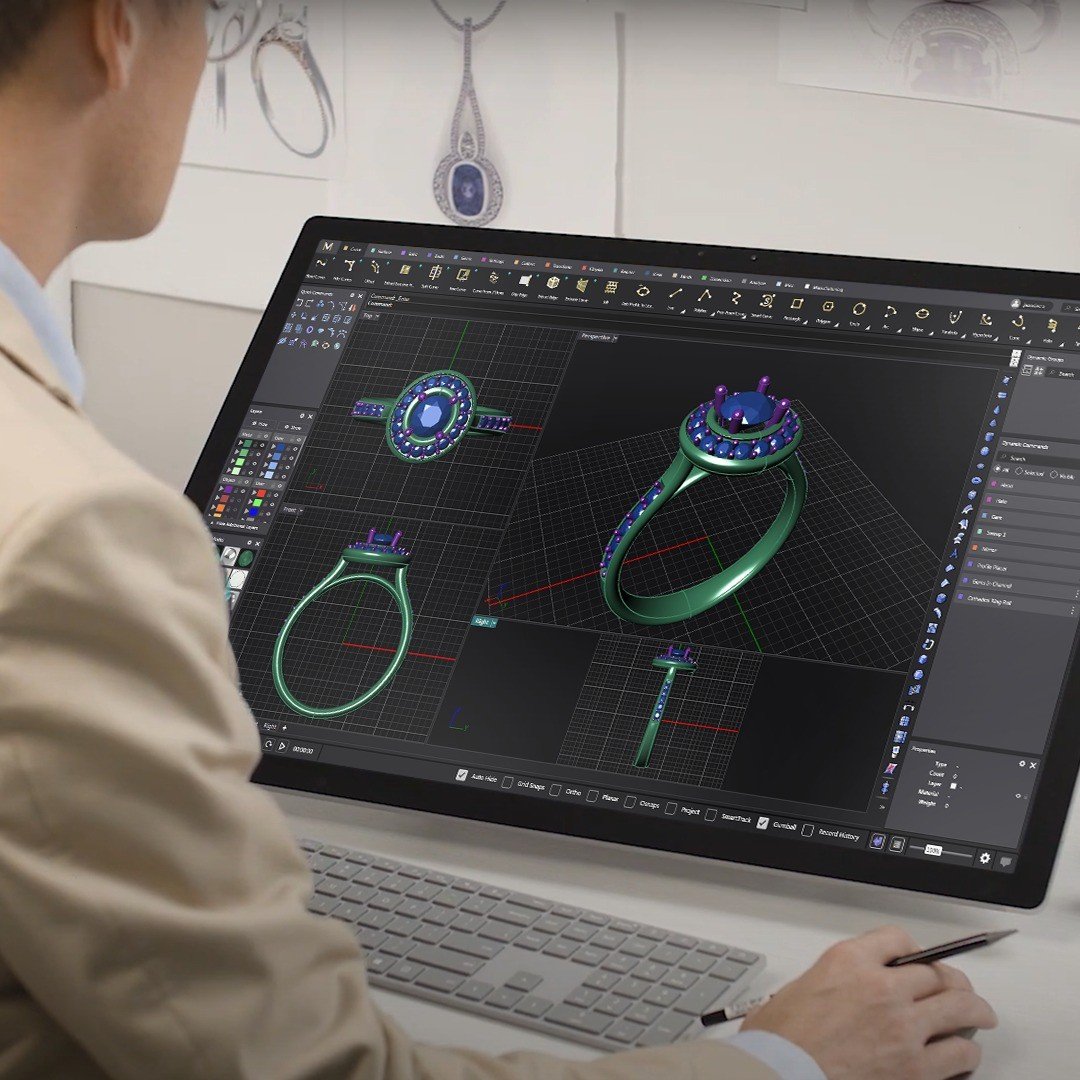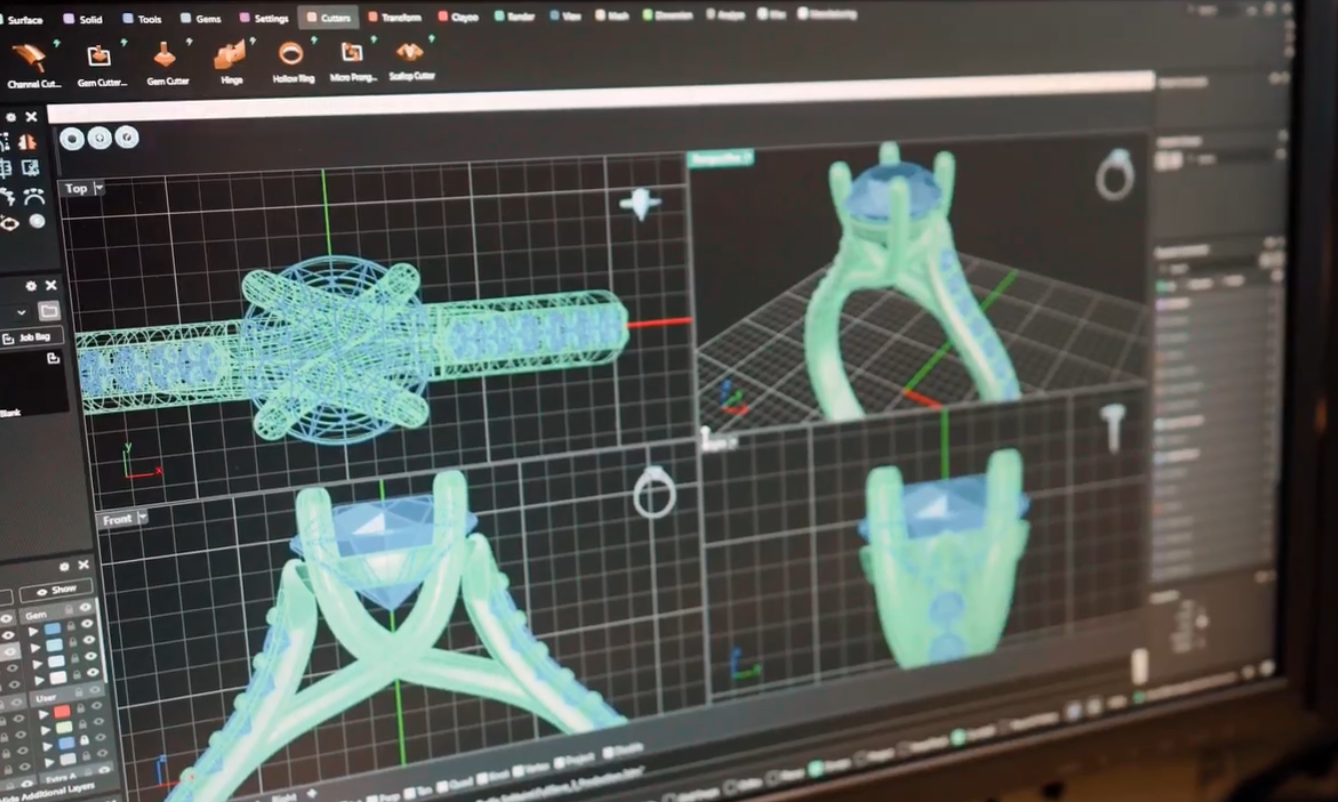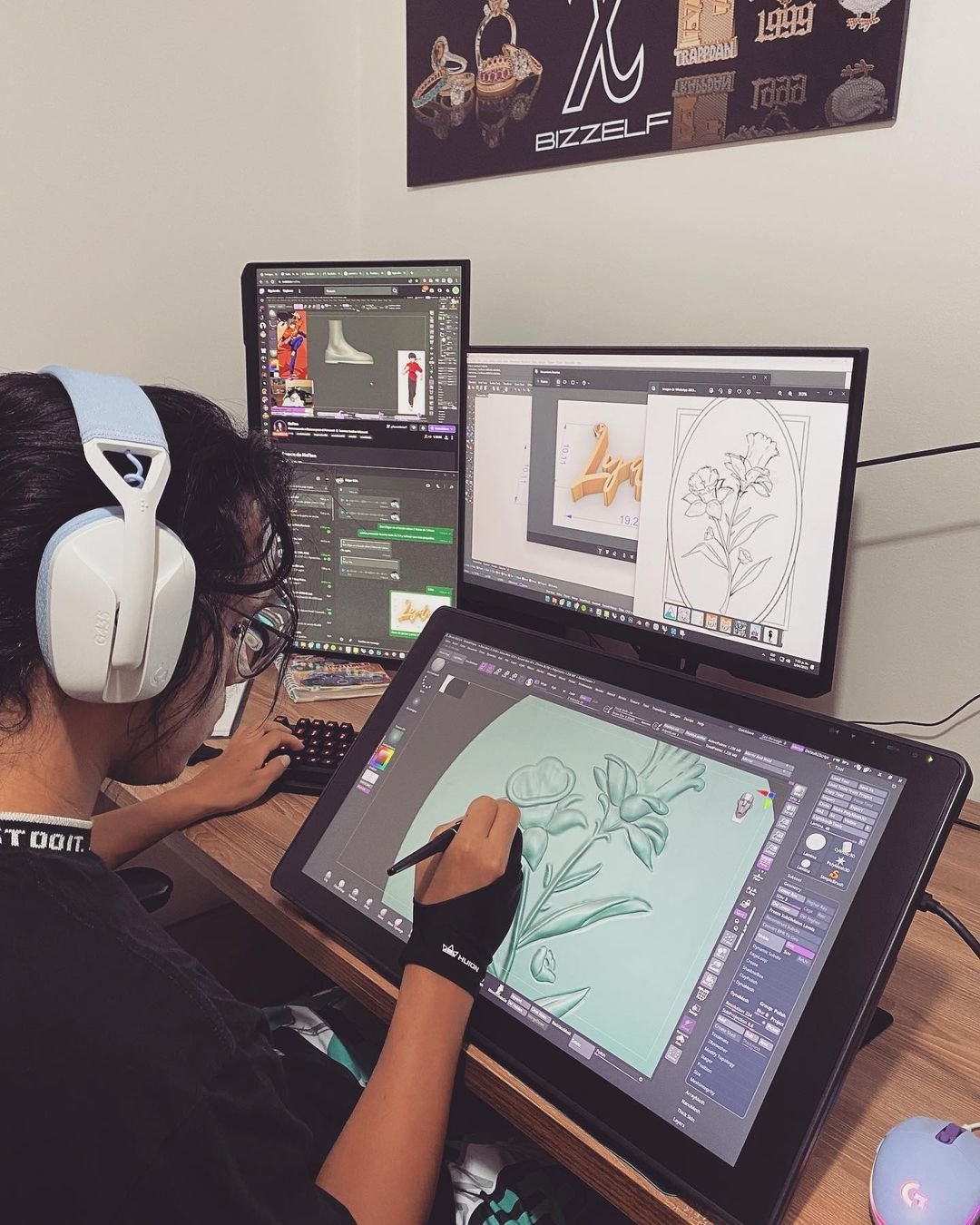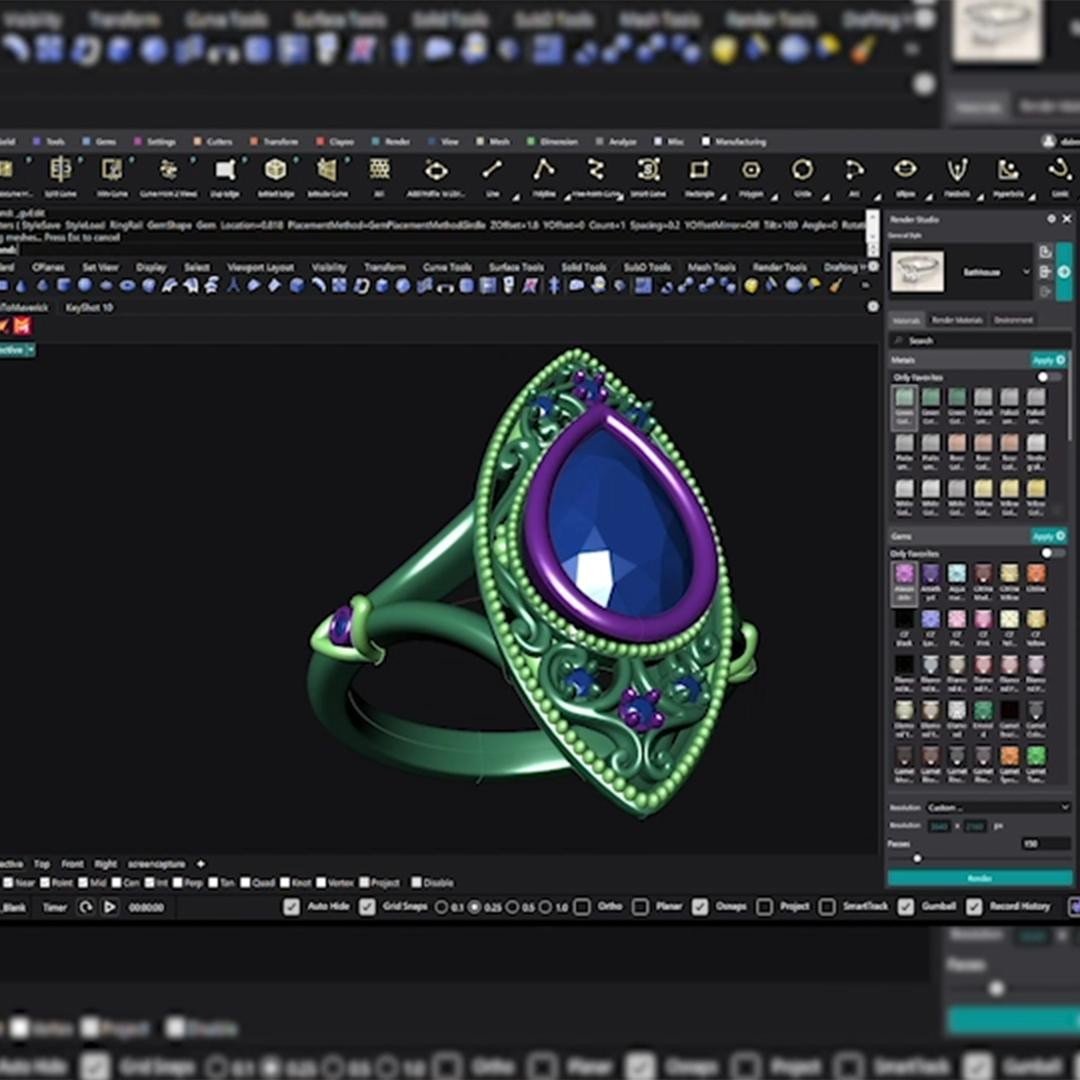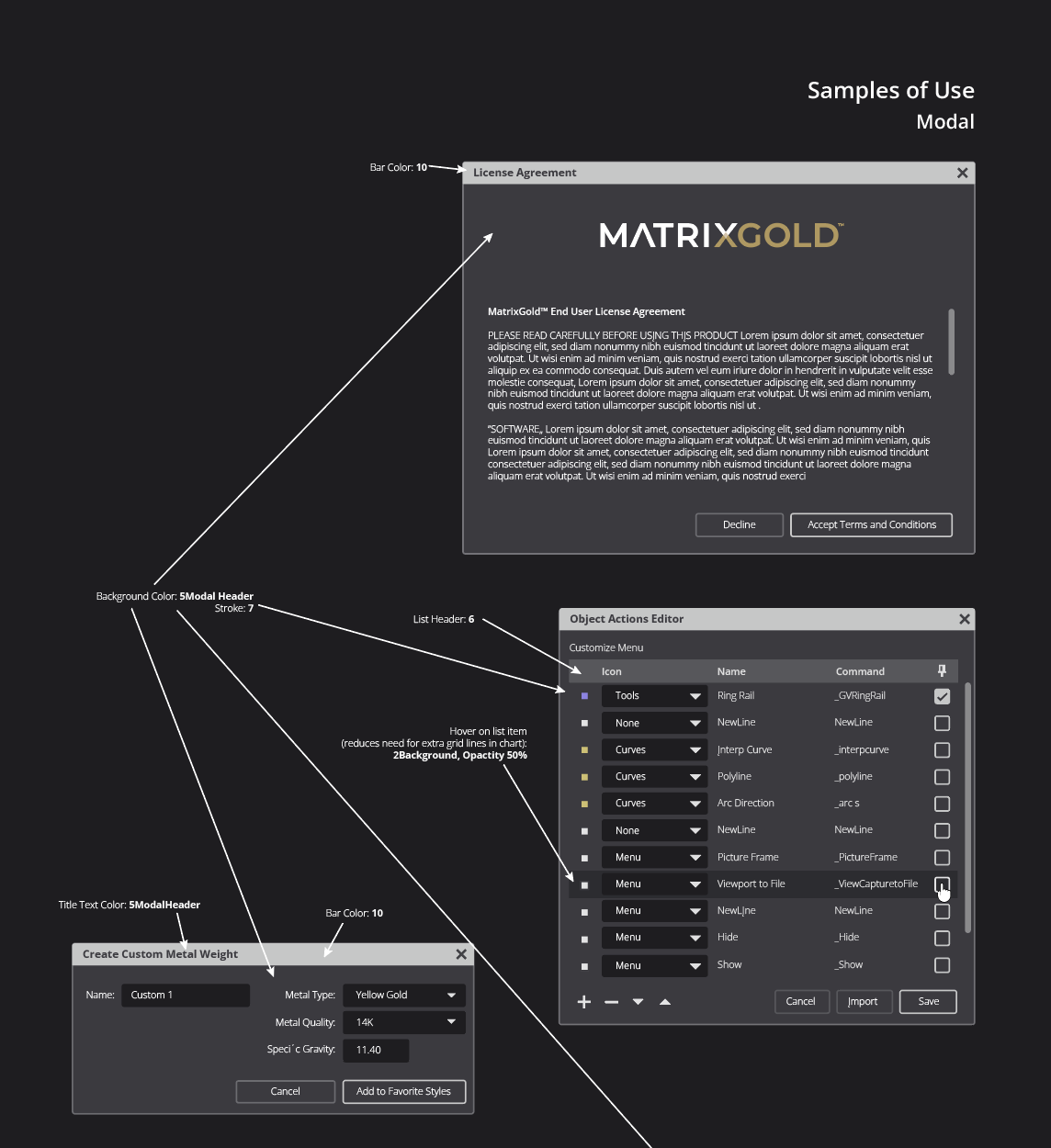MatrixGold Design Software
Empowering Creative Designers with Infinite Possibilities
What if...
jewelry designers had complete freedom to build custom jewelry to their customers delight, with or without pre-made library parts?
Me, working on designing and testing the interface of MatrixGold.
Objective
Create a replacement for the popular design tool Matrix, which had reached the limits of its aging technology
Improve jewelry manufacturing workflows in a new advanced solution to jewelry CAD design.
approach and differentiation
Unlike other 3D software on the market, MatrixGold empowers designers with
an extensive set of jewelry-specific tools and
unrestricted flexibility to design with or without the option of using pre-built library parts
Timeline and Project Details
initial hurdles & Obstacles
Deadlines were tight and unrealistic even for an MVP product.
As lead UX/UI designer, I was a brand new addition to a dev team who were not used to regularly working with anyone informing on UX or IU decisions.
There is a steep learning curve that comes with advanced 3D software.
steps to overcoming obstacles
Work closely with developers and provide design QA support, sometimes daily.
Utilize educational resources available to learn CAD software and become a capable 3D designer myself.
Organize regular feedback sessions with Product Manager and in-house team.
Perform user testing on a budget (with time constraints). Stuller’s in-house CAD team were some of the future users of this software and I regularly scheduled feature testing sessions to observe and gain valuable feedback on designs. This was done in the office computer classroom during work hours, which was very efficient.
UX Research
MatrixGold was a new product, but it was being designed as a replacement for a popular product (Matrix legacy software) with an enthusiastic user base. So I needed to design with those users in mind.
What did I do?
Work to hear users. Take customer support calls for Matrix and learn from them.
I spoke directly to users when they called the support line with problems.Research issues real customers were facing. This was very important to my understanding of current user problems in legacy Matrix software.
Some of the questions I was thinking of as I learned more about the user base:
How do jewelers use or interact with the current model product on a daily basis, and what frustrations or delights do they have?
How do Matrix features impact the user’s ability to effectively complete a task?
How will jewelers feel about a redesign of a Matrix, a product they are familiar with?
Are there types of jewelers who use the product differently or have different expectations than others?
Are there current user behaviors that reveal a need for new features in a future product?
Design Styles and Guidelines
I developed a guide to keep the visual elements of the interface consistent. This also served as a reference point for developers and other team members on visual identity of the product.
Product success?
The MVP product (MG Essentials) was not an overnight success. At the beginning, power users still preferred the legacy Matrix software because MatrixGold Essentials was very limiting in comparison.
How did I address this?
Collaborate closely with PM, QA lead, and team to understand and further address user needs.
Pushback on unrealistic deadlines where possible, so I could deliver something closer to what users needed.
Continue to ease the transition for users from legacy Matrix software to MatrixGold, by adding more of the valuable features customers were demanding. This was just a matter of time and team effort.
Good things take time (and research, and planning)
We eventually got the product in a good place and were able to add value in the eyes of the customers. But it took another year+ of research, design, testing, and learning from users.
What did I learn?
Looking back, it was a mistake to release the product so early, as even for an MVP product MatrixGold was not fully baked enough for users after only 6 months of design and dev. With my now experience, I would really push back harder to upper management on timeline and set expectations on just how far research and design can take us.
image @israamansourr on instagram
Result
Today MatrixGold is the go-to solution for designers world-wide who are looking to create bespoke jewelry pieces efficiently and effectively.
More about the product
The differentiation between Rhino 3D and MatrixGold is the addition of many time-saving tools specific to jewelry production.
How does MatrixGold work?
This product is built on a Rhino 3D CAD (Computer Aided Design) engine, so users of CAD who are familiar with Rhino, can easily pick up MatrixGold. For potential users unfamiliar with CAD, there is a bit of a learning curve. Gemvision offers in-person or virtual training to get users familiar with the CAD tools offered.
Seamless Integration with Manufacturing Processes:
MatrixGold enables designers to transform their virtual designs into tangible jewelry pieces. The CAD designs are readily convertible into 3D-printable models, which opens up a world of possibilities.
After printing the 3D design, the customer's stones can be set in it, allowing for a realistic try-on experience.
Once the design is approved, the 3D print serves as a mold for casting the final piece using precious metals, facilitating the production process.
Addressing the Surge in Custom Jewelry Demand
MatrixGold meets the explosive demand for custom jewelry by empowering designers with the tools and capabilities needed to fulfill the unique and personalized requirements of their clientele.




